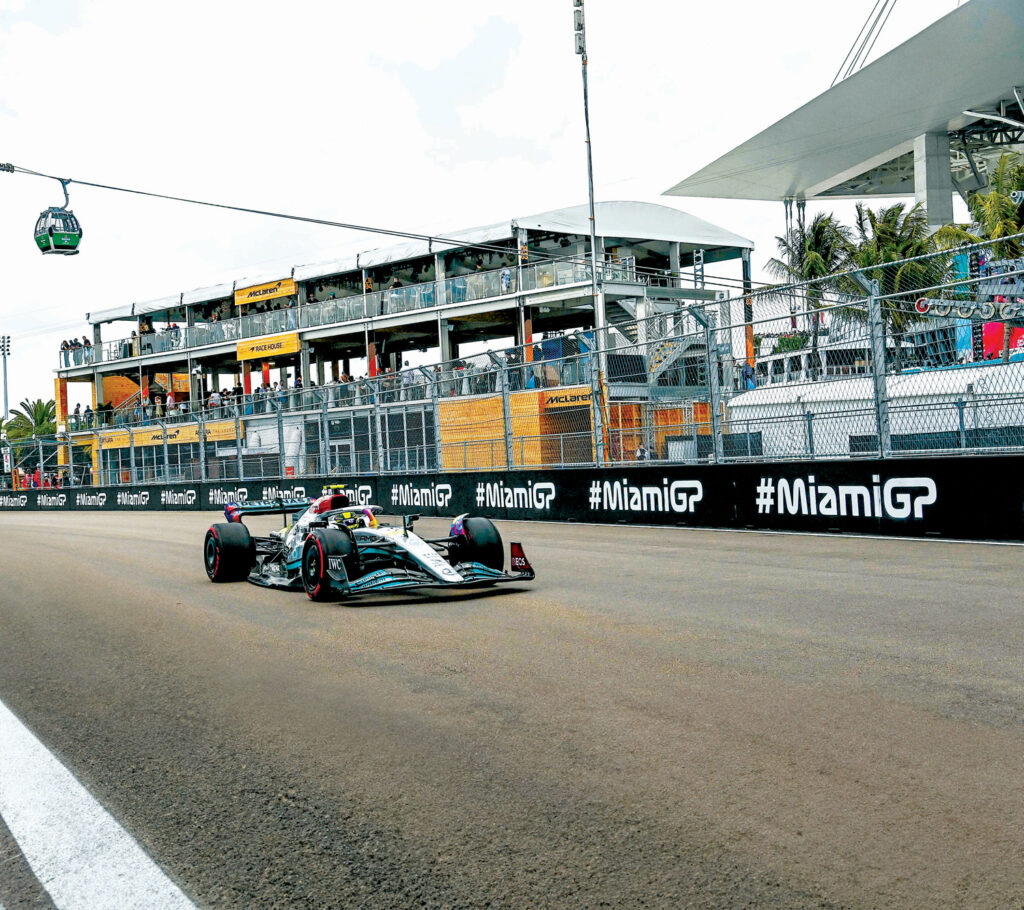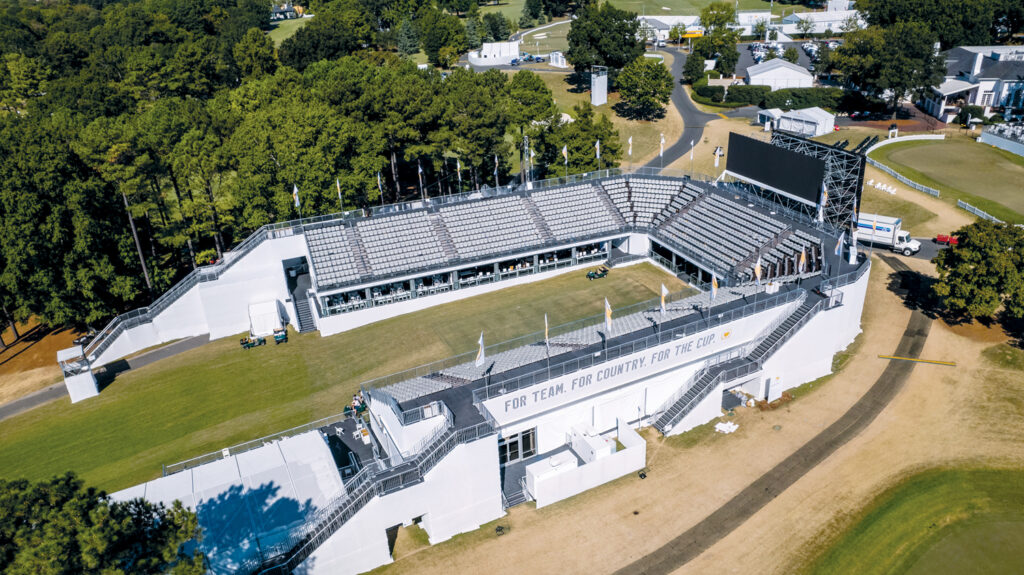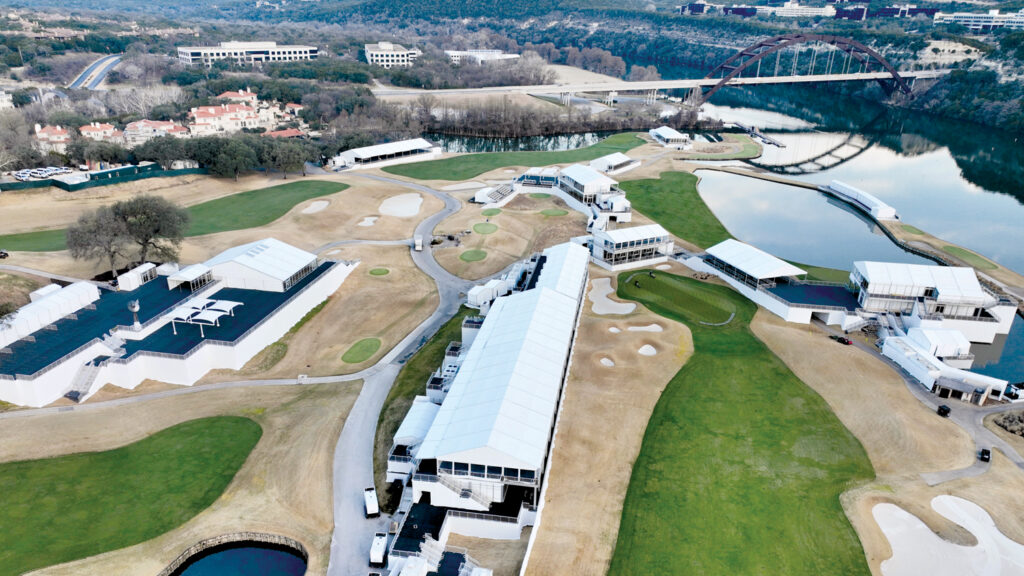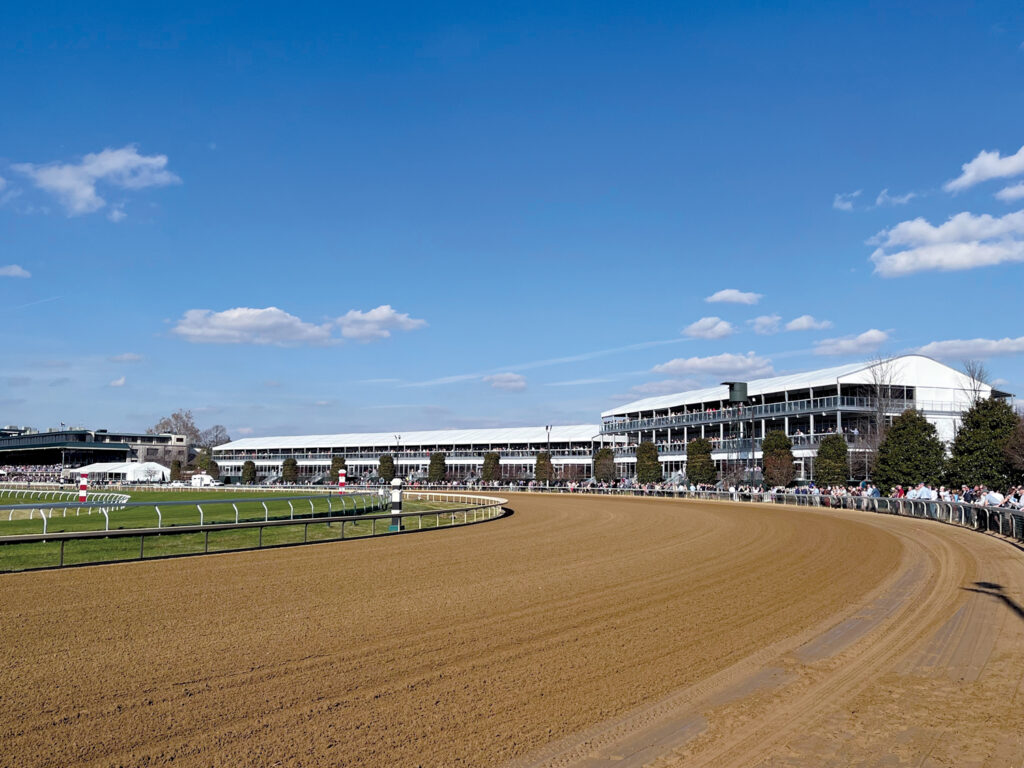
Shawn Smith is sitting in a tent on the 17th green at TPC Sawgrass, a celebrated golf course in Ponte Vedra Beach, Fla. It’s a typical sunny morning in the middle of February, and Smith, who is responsible for product development and quality control for Shaffer Sports & Events, one of the leading sports event rental companies in the U.S., based in Houston, Texas, is on the course preparing for The Players Championship, which will take place in a few weeks.
As anyone who can tell the difference between a wood and an iron knows, golf—and golf tournaments—has become big business since the sport exploded in the U.S. in the mid- to late-1980s, particularly since Tiger Woods became an international star.
So, setting up for a tournament and the crowds it draws takes a lot more work than it used to, especially as the patron tents increase in number and size to accommodate the growing fan base.
“We’ve had people working on-site since the end of October,” says Smith.
“We plan the layout and design of an event with clients roughly a year in advance,” explains Mark McCollister, Smith’s colleague, who is responsible for Shaffer’s account relationships and its in-house design team. “Really, it takes from the completion of one tournament looking forward to the next year to the same event to get it all done.”

Precious real estate
The increase in attendance left tournament organizers with the challenge of trying to accommodate everyone on a course with a finite amount of space. The solution, of course, was to expand vertically by installing multistory tents.
“A lot of the decision to go to two-story or more is how precious the real estate is on a golf course, relative to the demand of patrons to be at that spot,” says McCollister.
A great example, he explains, is the very hole at which Smith is working. “The 17th hole at TPC Sawgrass is that iconic hole that everyone wants to be around,” he says. “At some point we ran out of real estate for single-level tents, so we went up. That is generally the biggest driver in the decision to go multilevel—you have a prime piece of land at a sporting event and you just grow upward when you can’t grow out anymore.
“I’m looking at six double-decker tents around this 17th hole,” adds Smith. “We just added the sixth one this year. There would be no way to accommodate everyone unless we went up.”

Growing demand
“In the last two years, coming out of COVID, the demand for multilevels has increased a lot,” says McCollister. “There are inquiries for us to use them at lacrosse and cricket events, and even some tennis events have inquired lately.”
While Shaffer primarily works on golf tournaments—about 18 a year where the company builds hospitality structures and grandstands, including the Presidents Cup every four years—it also does motor sports and some horse racing. According to McCollister, the largest double-decker tent the company has built was 25 by 90 meters at the 2022 Presidents Cup in Charlotte, N.C., and the largest triple-decker was 23 by 65 meters at the Breeders’ Cup World Championship horse races in Lexington, Ky.
Smith says the company has constructed tents that go up three levels, and in fact could go higher. “We could go four if we need to,” he says. “We had an inquiry this year to go four, and we were prepared to do it had it materialized.”

Structural challenges
According to McCollister, all of Shaffer’s structures are made of aluminum, with the roof and sidewalls of regular tent vinyl. “We do have the ability to put hard wall or glass wall in place of vinyl sidewall, but there is nothing from the standpoint of materials and construction that’s any different between a single and multistory tent.
“Some people like the enclosed structures with a window to look out,” he adds. “And it just gives more of a finished formal look to use hard walls and glass walls instead of conventional vinyl.”
Smith says increasing the size and height of tents at these events involves several added challenges. “More floors mean more steel. If you want to go four levels, that’s going to require quite a bit more steel in the bottom level. As you go higher, you have to be able to bear the additional weight—that’s really the limitation.”
Managing rainfall and drainage issues can also be difficult. “Most folks want an open deck or patio on the top portion,” McCollister explains. “But that means you have to prevent the water off the top floor from draining on to the floors below. You can’t take the same waterproofing measures you use in commercial building. We have to install waterproofing panels and custom fabricate vinyl guttering systems to keep water from flowing to the lower levels. That’s been a learning process over the last six years, but it gets better with every year.”
HVAC requirements can be a little different for multistory tents as well. “Ducting has to be done underneath the bottom level or on back walkways,” says McCollister. “But what was a challenge five or six years ago has become almost second nature. Other suppliers in the industry have grown their capabilities, too, as the tents have become more complex, and that makes it easier.”
The most challenging setup McCollister and Smith have been involved with?
“That would be the Presidents Cup this past year,” says Smith. “This was the 25-meter structure, and they wanted us to cut out the floor in the middle, so we had a mezzanine. We’d never done that before. We had to do some extra bracing and built part of the floor outside the main tent for stability.”
But Smith notes, overall, the more multistory tents Shaffer erects, the easier it gets. “I like those challenges,” he adds. “I’m way past putting up tents in a parking lot.”

Finding creative uses
Joe Eimer is the northeast region sales representative for Losberger De Boer, one of the world’s largest clearspan manufacturers, based in Germany. Multistory tents are nothing new for the company—it has been offering these tents for about two decades under the product name Emporium—but Eimer agrees that they are growing in popularity as event organizers are finding more creative uses for them.
“They’re ideal for large sporting events, festivals and corporate functions,” he says. “For example, we installed one last summer at a concert venue in upstate New York, as a VIP facility at the side of the stage.”
That was the Keybank Headliner Lounge, constructed for the Constellation Brands Marvin Sands Performing Arts Center (CMAC), a 15,000-person amphitheater in Canandaigua, N.Y.
“CMAC wanted to create a private VIP area with great views of the stage,” says Eimer. “With this purpose in mind, Losberger, along with our local vendor McCarthy Tents & Events/Nolan’s Tent & Party Rental, delivered the two-story maxiflex Emporium.”
The location was set up to allow VIP ticket holders to experience desired amenities under a private tent, including access to private restrooms and private bars. “In addition,” says Eimer, “CMAC had the opportunity to further strengthen its ties with its sponsors to host brand events and activities, by offering a large amount of space, both inside and on the outside balcony area.”
To achieve what Eimer calls “a one-of-a-kind hospitality building for their world-class venue,” the company fitted out its 10-meter Emporium with a 2.5-meter eave balcony, glass and PVC cassette walls and double glass doors that are suitable for high-end applications. “We ended up with a modular two-story structure that can be combined with a full mezzanine to create an impressive viewing platform.”

Varying floor plans
One obvious benefit of having multiple levels is the number of floor plan possibilities it offers. Manufacturers design these products with a foundational core that can support a variety of sizes on its upper levels. According to Losberger, the foundational structure of the Emporium primarily consists of aluminum. Three plywood panels (27 mm thick) are installed on the laminated wooden intermediate purlins, which minimize noises that might arise during walking. The Emporium staircases are also anodized aluminum.
Eimer says the company’s structures are based on a modular principle so that a single tent system offers a wide range of configurations. On a double-decker tent, for example, 20-meter roof panels that are used on a normal A-frame also fit on the multistory tent. “In our system the blockout-coated vinyl walls, hard PVC panels and glass cassettes are all interchangeable between the single- and multistory structures.”
The SS3 by Schaffer is similarly versatile. “The bottom level is on a 5-meter grid and it’s adaptable to use with different brands or makes for the top tent,” McCollister explains. “With the same bottom product, I can put on a 15- or 20-meter top, which works well for our golf clients. We can go up to a 30-meter-wide gable up top, and it’s all the same product for the bottom.”
“You can unlock almost-limitless possibilities in terms of format, design, functionality and layout,” says Eimer. “With the multistory tents, it’s simply a matter of getting more event space in the same footprint.”
Jeff Moravec is a freelance writer based in Brooklyn Park, Minn.
SIDEBAR: Race space
Eventstar Structures, based in Medley, Fla., was responsible for the incredible multistory tent project at the Formula One Miami Grand Prix Paddock in Miami, Fla., seen on page 24. The project featured a group of permanent and semi-permanent multilevel structures that made up the events Paddock and F1’s patented Paddock Club high-end hospitality space.
The first level served as the pit garages and provided the foundation for the upper hospitality levels. The main paddock was a mix of enclosed climate-controlled spaces and open-air terraces that provided expansive views for lucky patrons. The enclosed portions were clad with custom stacked panoramic glass and insulated hard walls. The valance was treated with a custom fabric parapet printed with multiple intermediate interruptions on the run fabric panels to house LED screens that broadcast events live to guests seated in the opposing grandstand.
After years of planning and almost half a year of installation, the inaugural race in Miami was ultimately a success and the project received an IAA Outstanding Achievement Award from Advanced Textiles Association in 2022.
 TEXTILES.ORG
TEXTILES.ORG


